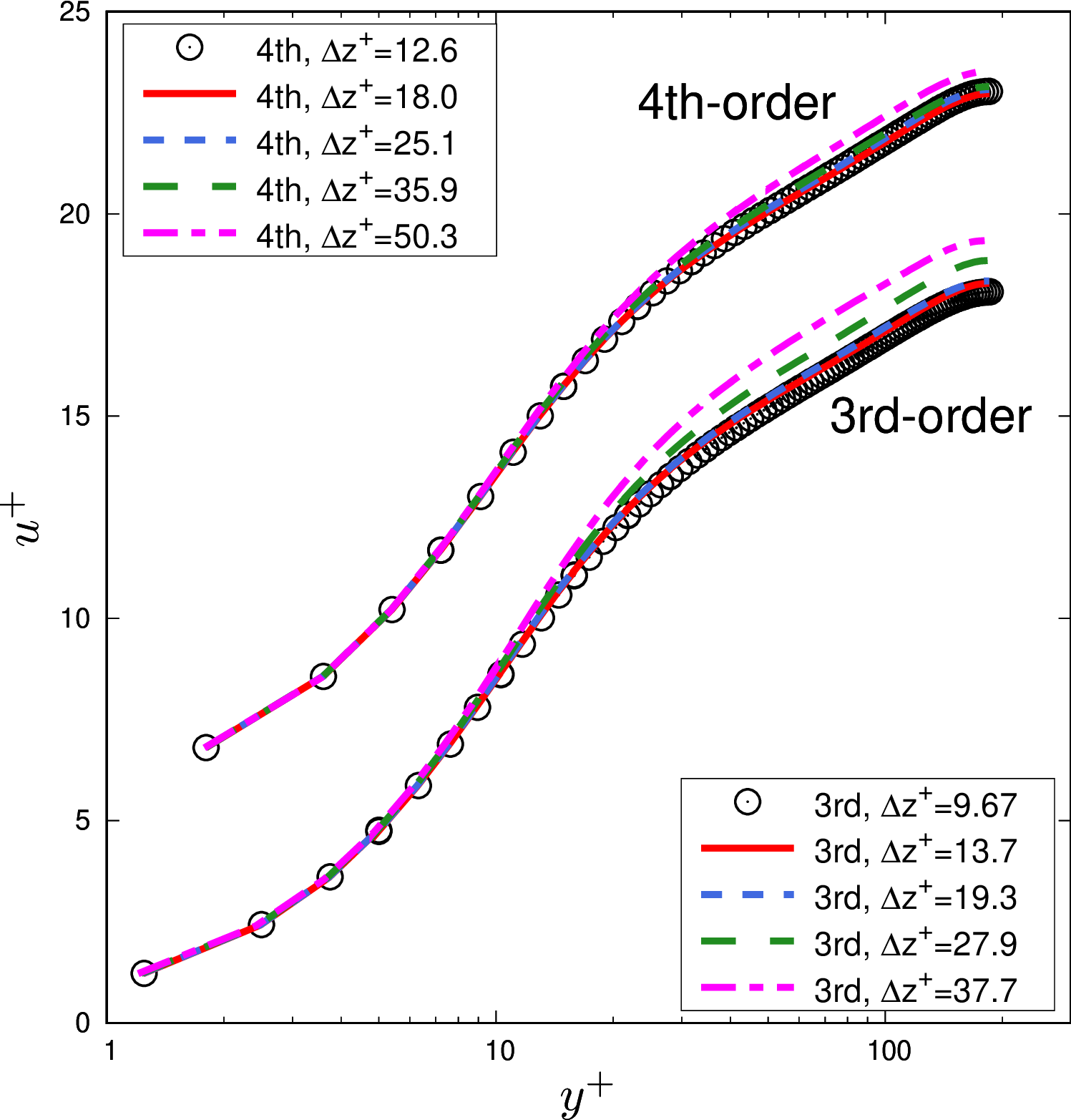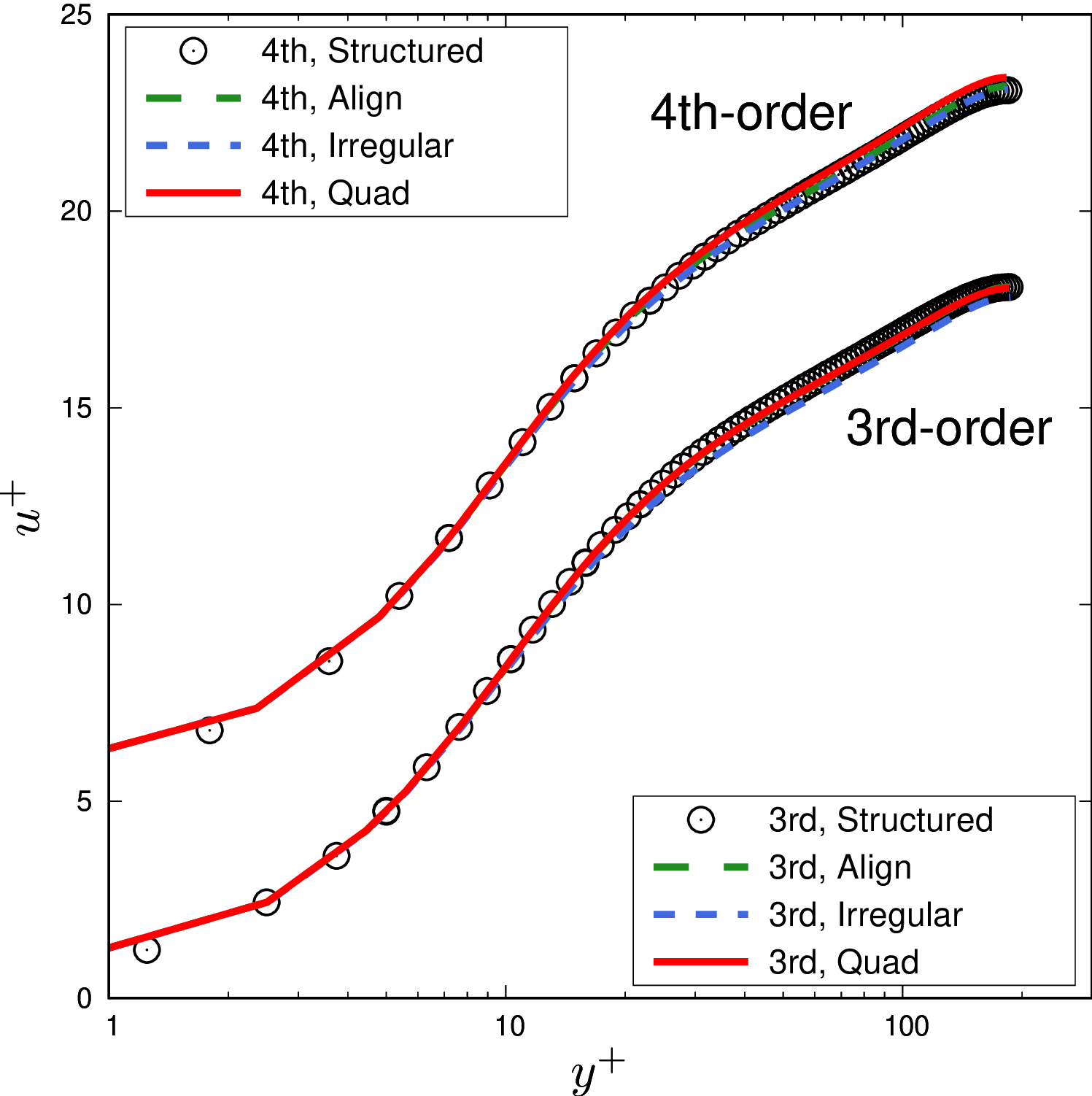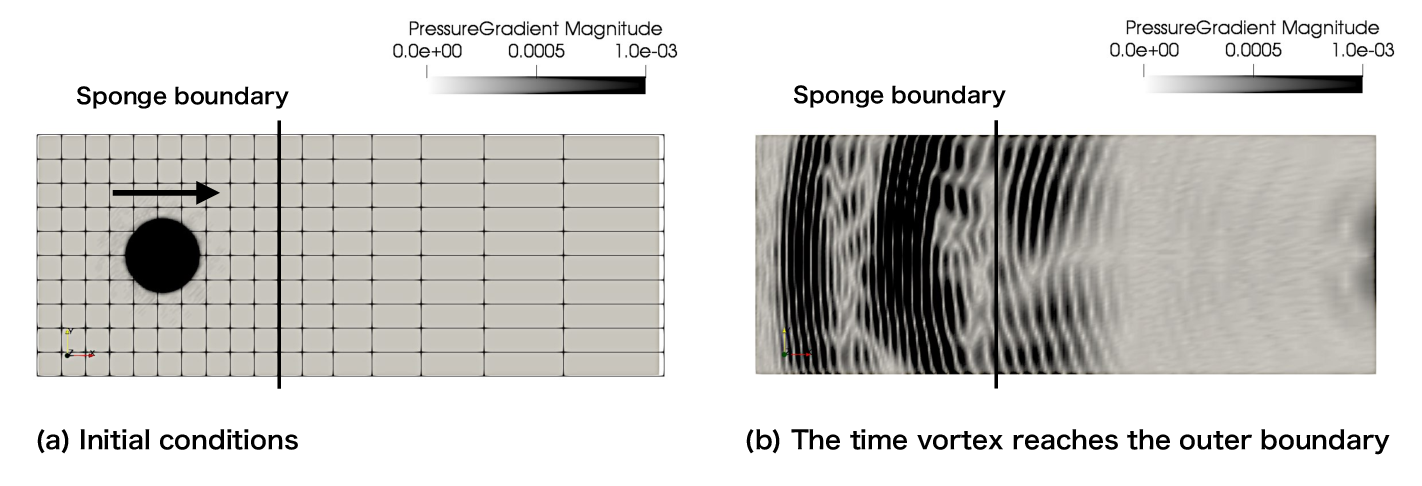Study of high-fidelity simulations for compressible turbulent flows and aeroacoustics around complicated geometries.
JAXA Supercomputer System Annual Report April 2018-March 2019
Report Number: R18EACA38
Subject Category: JSS2 Inter-University Research
- Responsible Representative: Hiroyuki Asada, Department of Mechanical Engineering, Ritsumeikan University.
- Contact Information: Hiroyuki Asada(h-asada@fc.ritsumei.ac.jp)
- Members: Hiroyuki Asada, Yoshifumi Ogami, Daisuke Nishida
Abstract
This study aims to develop a high-fidelity solver for aeroacoustics simulations. The solver is based on the high-order discontinuous Galerkin (DG) method which is one of the high-order unstructured mesh methods and the large eddy simulation giving highly accurate turbulent flow simulations. Additionally, we aims to elucidate the detail mechanism of aeroacoustics around high-lift devices of aircraft.
Reference URL
N/A
Reasons for using JSS2
The highly accurate simulations of turbulent flows and aeroacoustics require the high number of computational cells and high computational cost, and thus massive parallel computations using super-computer is mandatory to realize such simulations. Additionally, the high-order DG method is well suited to the massive parallel computations because high execution efficiency can be realized by this method.
Achievements of the Year
(1)Grid requirements of wall-bounded turbulent flows using LES and high-order DG methods, (2)a sponge layer for accurate aeroacoustics simulations using high-order DG methods are investigated this year.
(1)Grid requirements of wall-bounded turbulent flows using LES and high-order DG methods: While the high-order DG methods have been applied to steady flows around aircraft, the applications of the DG methods for LES of unsteady turbulent flows are still few. Even the required grid spacing for accurate predictions of wall bounded turbulent flows, which is one of the important physics for aeroacoustics, has not been clarified. This study simulates turbulent channel flows and elucidates grid requirements for accurate simulations of wall-bounded turbulent flows. Firstly, using the third- and fourth-order DG methods, effects of grid parameters in the streamwise, spanwise and wall-normal directions are examined. Figure 1 shows the mean streamwise velocity profiles. We can see that, compared with the third-order scheme, the fourth-order scheme well predicts the log-law even when the coarse meshes are employed. Additionally, on the wall-parallel plane, we create three unstructured meshes (aligned mesh, irregular mesh and quad-dominant mesh) based on the grid parameters of structured meshes show that these unstructured meshes give good agreements of solutions with the structured mesh case (see figure 2). Finally, based on the relationships between the modified wave number given by the Fourier Analysis and the obtained simulation results, we propose guidelines of grid parameters for accurate turbulent channel flow simulations and show that this guideline can be applied to the fifth-order DG method.
(2)A sponge layer for accurate aeroacoustics simulations using high-order DG methods: the sponge layer damps the acoustic wave before it reaches outer boundaries to suppress the non-physical reflections. Recently, Mani (2014) proposes the guideline of the sponge layer based on the mathematical analysis. However, requirements of the computational mesh in the sponge layer, called sponge mesh after here, have not been clarified. The solutions in the sponge layer are artificially damped, and thus it is natural that the number of sponge meshes should be reduced. This study examines effects of the sponge mesh parameters on the simulations of acoustic propagation and vortex advection using high-order DG methods. As the result, we show that, on the vortex advection problem, the non-physical high-frequency acoustic wave is generated when the sponge mesh is coarse. This serious problem is caused by not the sponge layer but the coarse mesh, and the sponge layer actually reduces such spurious acoustic waves. It means that there are the optimal sponge meshes, and we show that a design of the sponge layer can be realized by utilizing the relationships between the sponge damping profile and modified wave number.

Fig.1: Effects of spanwise grid spacing on the streamwise mean velocity (third- and fourth-order DG methods, fourth-order solutions shift in the vertical direction by 5).

Fig.2: Effects of unstructured meshes on the streamwise mean velocity (third- and fourth-order DG methods, fourth-order solutions shift in the vertical direction by 5).

Fig.3: A vortex advection simulation using a sponge layer (coarse sponge mesh, tenth-order DG method).
Publications
– Peer-reviewed papers
1)H. Asada and S. Kawai, “A Simple and Cellwise High-Order Implicit Discontinuous Galerkin Scheme for Unsteady Turbulent flows”, Transactions of JSASS, Vol. 62, No. 2, March 2019.
– Non peer-reviewed papers
1) H. Asada and Y. Ogami, “A sponge layer for accurate aeroacoustic simulations using high-order discontinuous Galerkin methods”, AIAA paper, AIAA 2019-1805, 2019.
– Oral Presentations
1) H. Asada and Y. Ogami, “Basic investigations of aeroacoustics simulations using LES and high-order DG methods”, 29 th International Symposium on Transport Phenomena, Hawaii conventional center, November, 2018.
2) H. Asada and Y. Ogami, “A sponge layer for accurate aeroacoustic simulations using high-order discontinuous Galerkin methods”, AIAA Science and Technology Forum 2019, Manchester Grand Hyatt San Diego, January, 2019.
Usage of JSS2
Computational Information
- Process Parallelization Methods: MPI
- Thread Parallelization Methods: N/A
- Number of Processes: 32 – 1028
- Elapsed Time per Case: 30 Hour(s)
Resources Used
Fraction of Usage in Total Resources*1(%): 0.24
Details
Please refer to System Configuration of JSS2 for the system configuration and major specifications of JSS2.
| System Name | Amount of Core Time(core x hours) | Fraction of Usage*2(%) |
|---|---|---|
| SORA-MA | 2,203,449.40 | 0.27 |
| SORA-PP | 2,075.23 | 0.02 |
| SORA-LM | 24.61 | 0.01 |
| SORA-TPP | 0.00 | 0.00 |
| File System Name | Storage Assigned(GiB) | Fraction of Usage*2(%) |
|---|---|---|
| /home | 42.92 | 0.04 |
| /data | 5,264.28 | 0.09 |
| /ltmp | 8,789.07 | 0.75 |
| Archiver Name | Storage Used(TiB) | Fraction of Usage*2(%) |
|---|---|---|
| J-SPACE | 0.00 | 0.00 |
*1: Fraction of Usage in Total Resources: Weighted average of three resource types (Computing, File System, and Archiver).
*2: Fraction of Usage:Percentage of usage relative to each resource used in one year.
JAXA Supercomputer System Annual Report April 2018-March 2019


